
Cēsis Old Town
In the Middle Ages, narrow, winding lanes and tightly packed craftsmen and merchant’s houses sprung up around the Cēsis Castle and church. Although the medieval structures have been lost due to countless wars and fires, the historic centre still maintains the medieval layout and remains almost unchanged.
Currently, the old town contains most of the historically and architecturally significant buildings in Cēsis, such as the 13th century St. John’s Church, Town Hall, Merchant House, Harmony House and Princess House. Small shops and creative workshops fill the ground floors of these and other houses.

The houses are interspersed with unique little courtyards, squares and plazas—Rose Square, Unity Square, Liv Square and other historically significant locations. You can continue your tour of the Old Town by visiting the Castle Park and May Park, which are both wonderful places for walking, relaxing and meeting at any time of year.
Meanwhile, if you want to know more, it’s worth taking a guided tour. You will find out about medieval Cēsis and the history of many of the buildings, while also enjoying the charm of the small town and viewing the town parks and churches (book a tour by phone: 26576111).
Cēsis Castle Complex
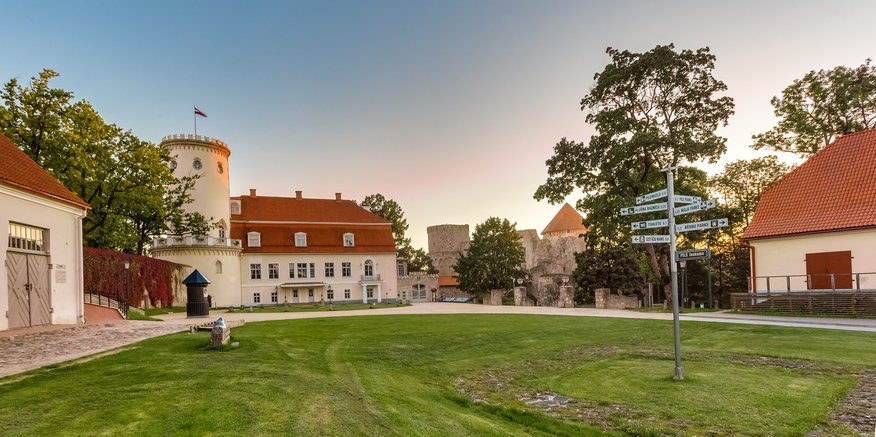
After first receiving torches from the castle visitor centre, you can explore the western tower of the medieval castle and see the master’s chambers, with its unique 16th century interior including a grand starry vaulted ceiling, vaulted consoles of artificial stone and mural fragments.
The top floor of the tower opens up to an impressive view of the remainder of the ruins, the castle-front, park and city. You can see bone and metal jewellery in the ancient smithy, and sometimes even meet the smiths themselves.
The New Cēsis Castle, along with the castle manor historical centre territory and the Livonian Order castle ruins, forms one of the most romantic and significant Vidzeme and Eastern Baltic cultural and historical monuments.
Since 1949, the New Castle has been the location of the Cēsis History and Art Museum, which enchants visitors with its wonderful interior exhibitions and murals, the tale of the Latvian flag, and the history of the city and castle through the years. The attic holds an exhibition of authentic 19th century clothing, while a trip to the top of the tower affords a view of the city and nearby natural landscapes.
Cīrulīši Nature Trails
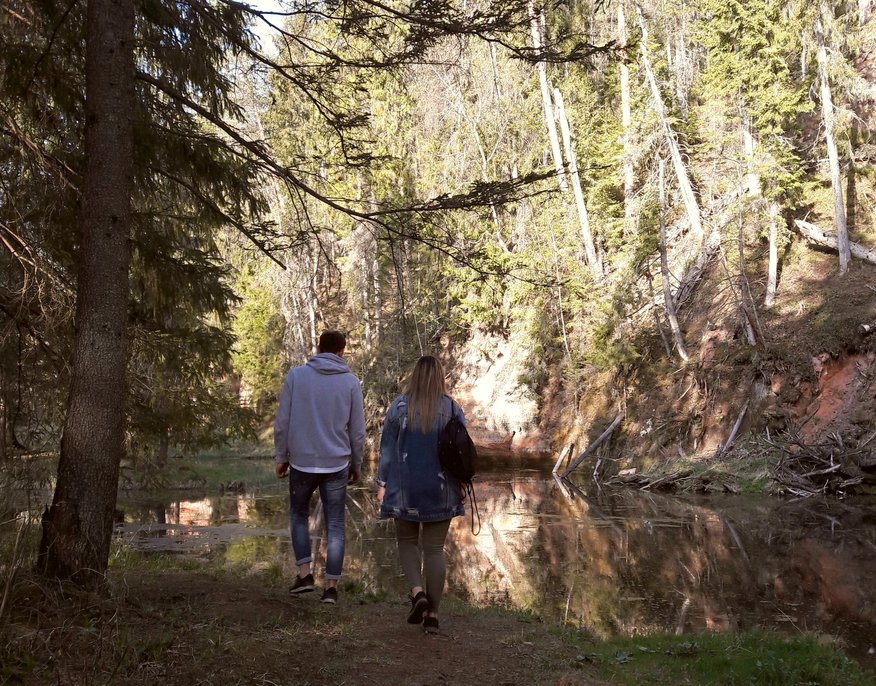
The Cīrulīši Nature Trails give visitors the chance to learn about the evolution of the Gauja Valley from the Ice Age to today as they walk! It reveals the history of the River Gauja and surrounding nature. How did the river form? What ancient plants grew here? Who were the first inhabitants? You will find out on a leisurely walk in this legendary place.
The territory has three well-kept, easily-accessible routes—2.7, 3.5 and 6.3 kilometers long. On your walk you’ll see fascinating natural formations: the Zvani Cliffs; the impressive Spoguļklintis Cliffs (Cīrulīši Cliffs), which are reflected in the ancient waters; the Dzidravots Spring; the Līgava Cave (Bride’s Cave) which will convince you of the power of love; as well as the Cīrulīši Cave.
Ērgļi Cliffs
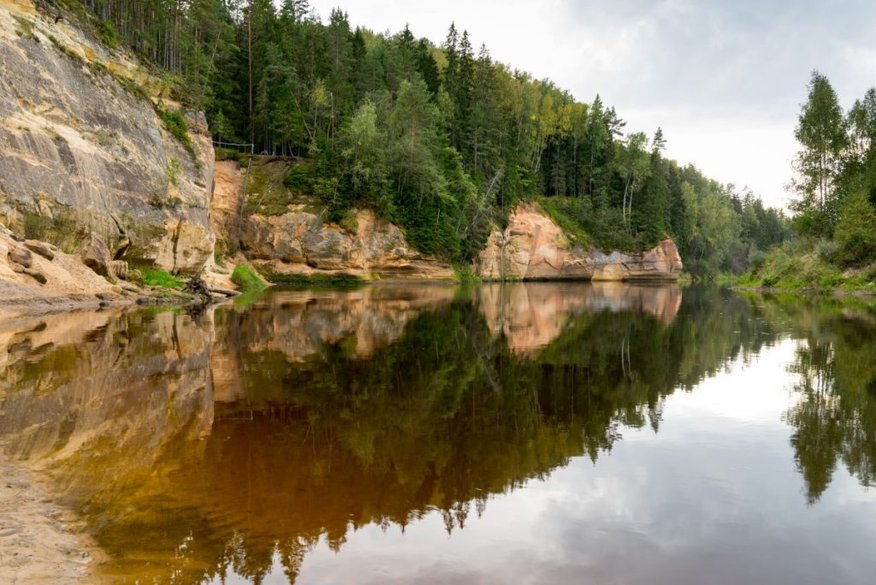
The Ērgļi or Ērģeles Cliffs are a grand, majestic wall rising straight out of the Gauja. The most impressive cliffs in the Gauja Valley are characterised by their seamless, monolithic sandstone surface. Legends say that an echo from these cliffs sounds like an organ, which is why they were first called the Ērģeles (Organ) Cliffs, and later the Ērgļi (Eagle) Cliffs. Their very first name was Pieškaļi Rock.
Above the cliffs is a viewing platform which affords a picturesque view over the forest and the winding Gauja. There, you can also walk the two kilometer walking trail.
The cliff wall is 700 metres long, and the western end of the cliffs, which turns away from the Gauja and hides behind the trees, is 21.5 metres tall. Lower down, where the cliffs are almost at an end and again turn towards the river, is the Ērgļi Niche and springs.
Red Cliffs
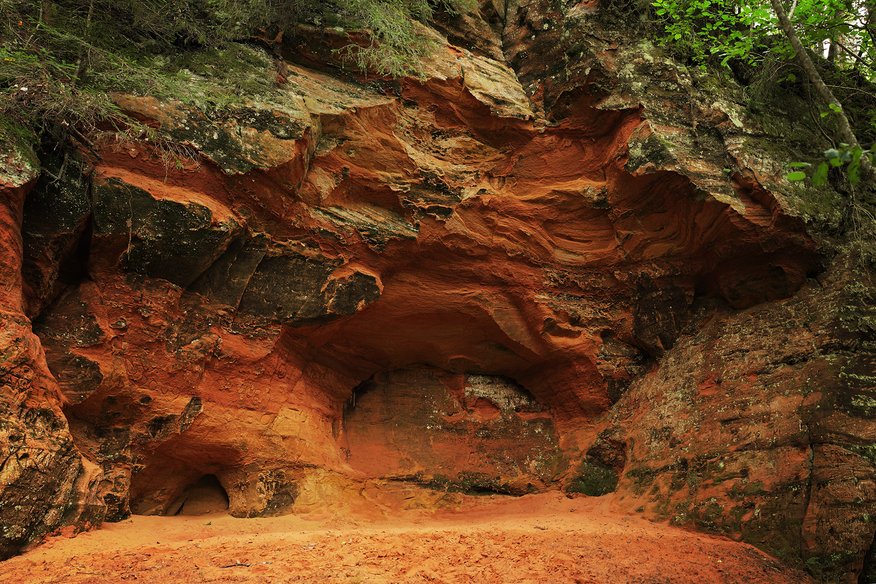
The Red Cliffs, or Raiskums Rock, is on the right hand bank of the Gauja around half a kilometer from the old Raiskums or Liepleja tavern building further up the river. The cliffs stretch for several hundred metres and are red, which is why they are called the Red Cliffs.
There are several crevices in the cliffs which split the red rocks, creating an unusual natural work of art. The surface of the cliffs is quite jagged, creating small caves and niches. The sandy cliff wall has a gap down the middle, splitting the cliffs into two halves.
Several springs flow from the cliffs. One of these is Rūcamavots (Roaring Spring), which springs from the ground with a snarl. Many come to the cliffs to collect water from Rūcamavots.
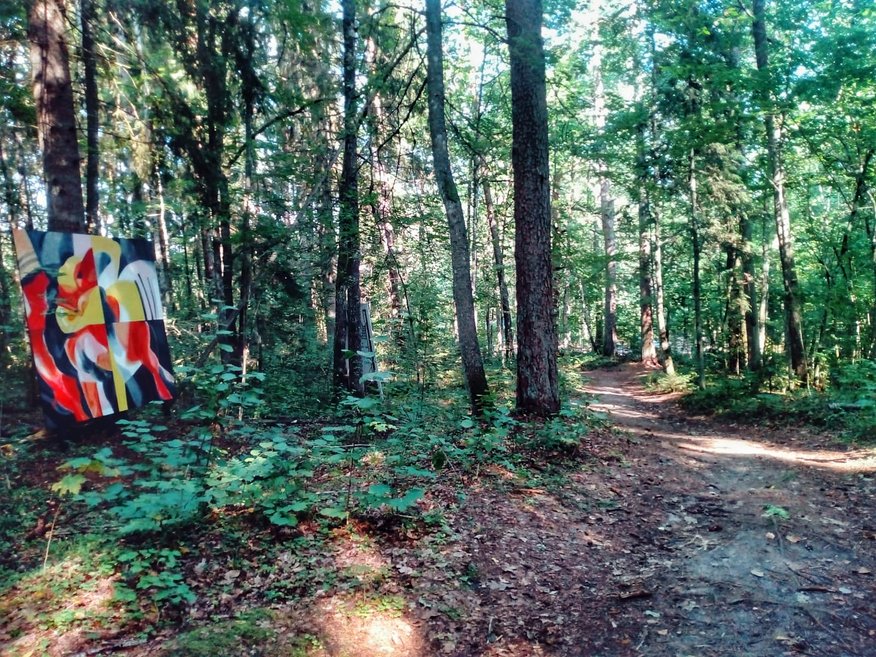
Currently, there are large-format paintings installed along the trail year-round, which were painted based on characters from the stories of Latvian writer Kārlis Skalbe.



